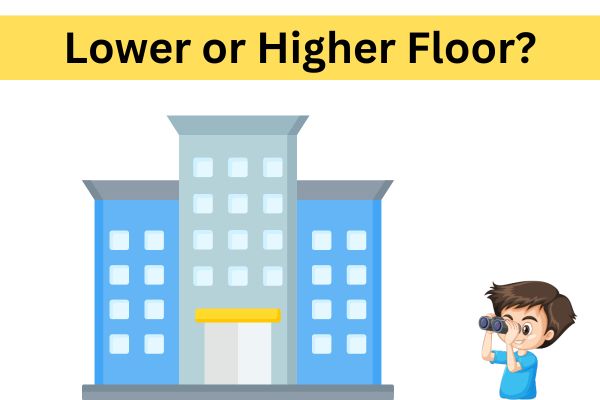When deciding between a lower or higher floor unit in a condominium, there are various aspects to think about. Here’s a breakdown of the benefits and drawbacks for each:
1. Noise Levels:
- Lower Floor Units: Often noisier due to street activity and foot traffic.
- Higher Floor Units: Generally quieter, though noise can still come from nearby amenities.
2. Views:
- Lower Floor Units: Usually have blocked views due to nearby buildings or trees.
- Higher Floor Units: Typically offer more expansive views, though this can vary.
3. Ventilation and Air Quality:
- Lower Floor Units: Less breezy and can have poorer air quality since they are closer to street level.
- Higher Floor Units: Enjoy better air quality and cooler breezes as they are farther from traffic.
4. Energy Use:
- Lower Floor Units: May use more air conditioning at night because of less natural airflow and sun exposure. More likely to use a dryer frequently.
- Higher Floor Units: Benefit from natural ventilation and sunlight, potentially reducing daytime air conditioning needs and dryer use.
5. Ease of Access:
- Lower Floor Units: Easier to reach with quicker lifts waits.
- Higher Floor Units: Depending on number of lifts, probably longer waiting time, though there’s less chance of overcrowding.
6. Privacy:
- Lower Floor Units: Often less private due to their visibility from the street.
- Higher Floor Units: Typically offer more privacy and are less visible from outside.
7. Family-Friendliness:
- Lower Floor Units: More accessible for families with children due to easier lift access.
- Higher Floor Units: Less convenient for families because of longer waits for lifts and more distance from parking. This depends on the number of lift and whether there is separation of lift zone which makes lift waiting time very minimal.
8. Safety:
- Lower Floor Units: Can be more vulnerable to burglaries and flooding.
- Higher Floor Units: Higher floors might face greater fire safety concerns.
9. Plumbing System:
- Lower Floor Units: Often have better water pressure.
- Higher Floor Units: May be more prone to water damage from leaks or other issues.
10. Light and Temperature:
- Lower Floor Units: Tend to get less natural light and are generally cooler.
- Higher Floor Units: Receive more natural light but may be warmer overall.
11. Pests and Litter:
- Lower Floor Units: More likely to encounter pests like cockroaches and rats, and may experience issues with litter from higher floors.
- Higher Floor Units: Less likely to face pest problems and litter issues.
12. Higher Floor Premiums:
- Lower Floor Units: Typically more affordable.
- Higher Floor Units: Often come with a higher price tag due to their advantages.
13. Rental Returns and Capital Appreciation:
- Lower Floor Units: Can attract steady rental demand and may appreciate in value, depending on the building.
- Higher Floor Units: Usually have strong rental demand and can see significant appreciation, though they tend to be more expensive.
In summary, each floor level offers different benefits and challenges. Choosing between a lower and higher floor unit depends on which factors—such as access, views, or privacy—are most important to you.
